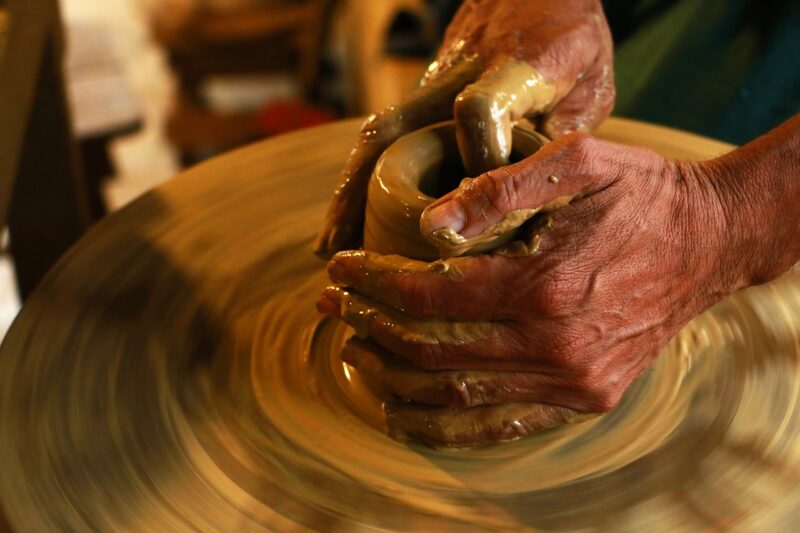The Art of Swordsmithing: How Blades Have Been Perfected Over Centuries
November 11, 2024

Swordsmithing is an ancient craft that blends artistry, skill, and tradition to create some of the most iconic weapons in history. From the finest Japanese katanas to the brutal broadswords of medieval Europe, each blade tells a unique story of its cultural heritage, technological innovation, and the relentless pursuit of perfection. This article delves into the rich history and intricate processes of swordsmithing, exploring the evolution of blades over centuries.
1. The History of Swordsmithing: A Timeless Craft
The craft of swordsmithing dates back thousands of years, originating in ancient civilizations such as Mesopotamia, Egypt, and the Indus Valley. The earliest swords were simple tools made from copper and bronze, but as techniques progressed, iron began to dominate the market, leading to the development of steel.
In Asia, particularly in Japan, swordsmithing evolved into a revered art form during the Heian period (794-1185). It was here that the katana, famous for its sharpness and grace, was perfected. Swordsmiths devoted themselves to meticulous crafting methods, creating blades that not only served as weapons but also as symbols of status and artistry.
In Europe, swordsmithing took a different path. During the medieval era, swords were often made for battle and designed to withstand heavy use. Blacksmiths utilized various techniques, including pattern welding, which involved layering different types of steel to enhance both strength and flexibility. Each region developed its style reflecting the unique needs of its warriors and the available materials.
2. The Evolution of Materials: From Bronze to Damascus Steel
As metallurgy advanced, so did the materials used in swordsmithing. The transition from bronze to iron marked a significant leap in sword-making technology. The advent of steel revolutionized the craft, leading to the creation of stronger and more durable blades.
One notable development was Damascus steel, known for its distinctive patterns and exceptional strength. Originating in the Middle East around the 3rd century, this technique combined high-carbon steel with low-carbon steel to create blades that were both resilient and refined. The process produced blades that were flexible and capable of being honed to a razor-sharp edge.
In modern times, advancements in metallurgy have introduced stainless steels and composite materials, allowing swordsmiths to create blades that are resistant to rust and wear while maintaining sharpness. However, traditional materials continue to be celebrated among artisans committed to reviving ancient techniques.
3. The Swordsmithing Process: Crafting the Perfect Blade
The swordsmithing process is an intricate combination of art and science, requiring years of training and dedication. Here’s a detailed breakdown of the key steps involved in crafting a high-quality sword:
a. Forging the Blade
The process begins with selecting the appropriate type of steel. The swordsmith heats the steel to a high temperature and hammers it into shape, a technique known as forging. This manipulates the grain of the steel, enhancing its strength and flexibility.
b. Shaping and Grinding
After forging, the blade is roughly shaped. The swordsmith then uses grinding wheels to refine the blade’s edge and surface. This stage requires precision, as the sharpness and overall balance of the sword depend on the glide of the grinding tool.
c. Heat Treatment
Heat treatment is a crucial step, where the blade is heated to specific temperatures and then quenched in oil or water. This process hardens the steel, but it can also make it brittle. The swordsmith must manage this carefully to achieve the desired balance between hardness and toughness.
d. Tempering
Tempering follows heat treatment, where the blade is reheated at a lower temperature to reduce brittleness. This makes the sword more resilient and less likely to break under stress.
e. Polishing and Finishing Touches
Finally, the blade is polished to bring out its shine and visual appeal. During this stage, intricate designs, inscriptions, or decorations can also be added. A well-crafted sword is not just functional; it is a work of art that showcases the artisan’s skill.
4. The Cultural Significance of Swords
Throughout history, swords have transcended their role as mere weapons; they are symbols of power, honor, and craftsmanship. In many cultures, the sword is a rite of passage, a mark of nobility, and a historical artifact.
In Japan, for example, the katana is not just a weapon but a spiritual object, believed to embody the soul of the swordsmith. Swordsmiths are highly respected figures, and their craftsmanship is often regarded as a divine art.
Similarly, in European history, swords were indicators of status and might, often wielded by knights and nobility in battle. Each sword carried a unique story, from blood-soaked battlefields to royal courts, traditionally passed down generations as heirlooms.
5. The Future of Swordsmithing: A Blend of Tradition and Technology
As we step further into the 21st century, swordsmithing remains a revered craft, although it is now complemented by modern technologies. 3D printing and advanced materials science are beginning to impact how swords are designed and produced.
However, the essence of swordsmithing — the patience, skill, and artistry — continues to thrive among skilled artisans who honor traditional methods while adapting to contemporary needs. Workshops around the world hold courses to teach aspiring swordsmiths the ancient techniques, ensuring the art lives on.
Moreover, the resurgence of interest in historical weaponry among enthusiasts and collectors continues to fuel the demand for handcrafted swords, preserving the age-old traditions in a modern context.
Conclusion
Swordsmithing is a craft steeped in history, tradition, and artistry. From its ancient origins to modern adaptations, the evolution of the blade reflects humanity’s ingenuity and resilience. Whether as a tool for battle or a piece of art, swords represent the culmination of skill and passion from generations of artisans. The future of swordsmithing promises a blend of tradition and innovation, ensuring that the legacy of the blade will endure for centuries to come.







